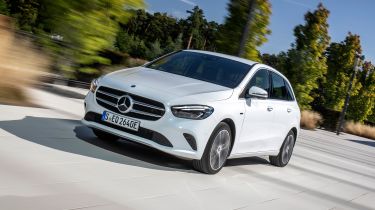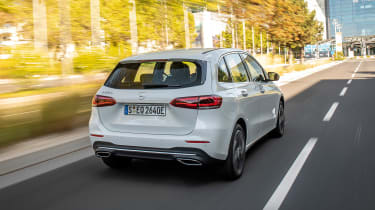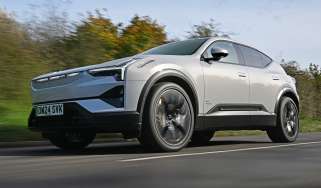Mercedes B-Class hybrid review
As one of the few plug-in hybrid mid-sized MPVs on the market, the Mercedes B 250 e makes a good alternative to the SUV mainstream

Pros
- Classy interior
- Practical family transport
- Proven plug-in hybrid drivetrain
Cons
- Petrol engine can feel strained
- Cheaper rivals just as capable
- Not as good to drive as A-Class
| Car type | Electric range | Fuel economy | CO2 emissions |
|---|---|---|---|
| Plug-in hybrid | 42 miles | 235mpg | 25g/km |
You could be forgiven for thinking MPVs had been consigned to the history books, a relic of a bygone pre-SUV age. However, Mercedes is one of a few manufacturers keen to keep every niche plugged, so its B-Class has returned for another generation as a viable alternative to SUV ownership.
As the German manufacturer does its best to electrify its entire range, the new B is available for the first time as a plug-in hybrid – called the B 250 e. Power comes from what's now a familiar drivetrain in smaller plug-in Mercedes: a 1.3-litre turbocharged petrol engine paired with an electric motor and 15.6kWh battery. Total output is 215bhp, enough for a 0-62mph time of 6.6 seconds and a top speed of 146mph.
A plug-in hybrid family car will always be judged more on its efficiency, however. The B 250 e does well on paper, with a claimed 235mpg fuel-economy figure and a pure-electric range of just over 40 miles. You'll have to drive carefully and start off with a fully charged battery to get close to those numbers – as so often is the case with plug-in hybrids – but the B-Class compares favourably with the bulk of its largely SUV-shaped competition.
A low CO2 emissions figure of 25g/km is particularly good news for company-car users, with a 7% Benefit-in-Kind rating meaning low monthly tax payments. Buyers will need to make sure they keep their B 250 e under the £40,000 threshold to avoid higher-rate VED (road tax), which should be perfectly doable on all models (AMG Line Executive, Premium and Premium Plus) provided you steer clear of the options list.
The B-Class does lack some of the visual appeal of a more imposing, higher-riding SUV, but some may prefer the understated look of this car. It shares more cues with the smaller A-Class both outside and in, with its interior feeling as classy and well appointed as that car.
There's plenty of space too, with lots of head and legroom for rear-seat occupants and a boot that suffers less battery intrusion than usual for a plug-in hybrid. The standard car's 440 litres has dropped to 405, but there's a good space with no step in its floor. We'd have preferred dedicated space for the charging cables, however.
Speaking of cables, the B-Class comes as standard with five-metre Mode 2 for charging from a domestic three-pin socket (which should take about five hours and 30 minutes from 10%), along with a four-metre Mode 3 cable for use with public chargers.
The B 250 e has a maximum charging speed of 7.4kW, which equates to a 10-100% charge in as little as an hour and 15 minutes – or three hours and 15 minutes if you have a slower 3.6kW wallbox. Mercedes has a partnership with BP Pulse that means you can install a 7kW wallbox for £499, with a projected charge time that's still under five hours.
The B-class is practical and efficient, but you'll find it hard to get excited about the way it drives. The drivetrain itself is well integrated and does a good job of switching between power sources; 'Comfort' mode in particular tends to stick with electric power as long as possible, with stronger throttle inputs needed to wake the petrol engine.
Once it does kick in, the 1.3-litre unit can feel a bit thrashy, especially under harder acceleration. Adopting a smoother driving style to compensate shouldn't be too difficult in an automatic family Mercedes, however. Elsewhere, the B-Class doesn't cope as well with corners as its more nimble A-Class sibling; body roll is more pronounced than in the A-Class but the B feels pretty comfortable and refined.
There's a lot to like about the B 250 e, which offers a luxurious Mercedes experience in a fairly practical box-shaped package. It's efficient and (relatively speaking) well priced, but not all that fun to drive. Whether or not it's worth the extra over cheaper, SUV-shaped competition like the Kia Niro PHEV will depend heavily on your desire for a premium badge and luxurious interior.



